Anthropic, a leading AI model provider, has proposed a protocol and architecture for providing language models with the necessary context obtained from external systems.


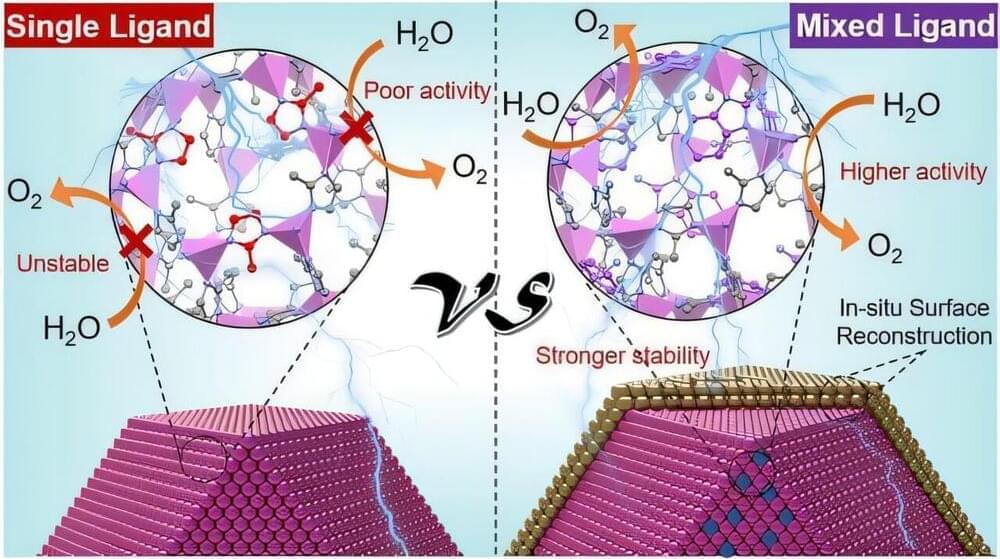
A research team at the Institute of Materials Chemistry at TU Wien, led by Professor Dominik Eder, has developed a new synthetic approach to create durable, conductive and catalytically active hybrid framework materials for (photo)electrocatalytic water splitting. The study is published in Nature Communications.
The development of technologies for sustainable energy carriers, such as hydrogen, is essential. A promising way to produce hydrogen (H2) is from splitting water into H2 and oxygen (O2), either electrochemically or using light, or both—a path that the team follows. However, this process requires a catalyst that accelerates the reaction without being consumed. Key criteria for a catalyst include a large surface area for the adsorption and splitting of water molecules, and durability for long-term use.
Zeolitic imidazolate frameworks (ZIFs), a class of hybrid organic/inorganic materials with molecular interfaces and numerous pores, offer record surface areas and ample adsorption sites for water as catalysts. They consist of single metal ions, such as cobalt ions, which are connected by specific organic molecules, called ligands, through what is called coordination bonds. Conventional ZIFs only contain a single type of organic ligand.
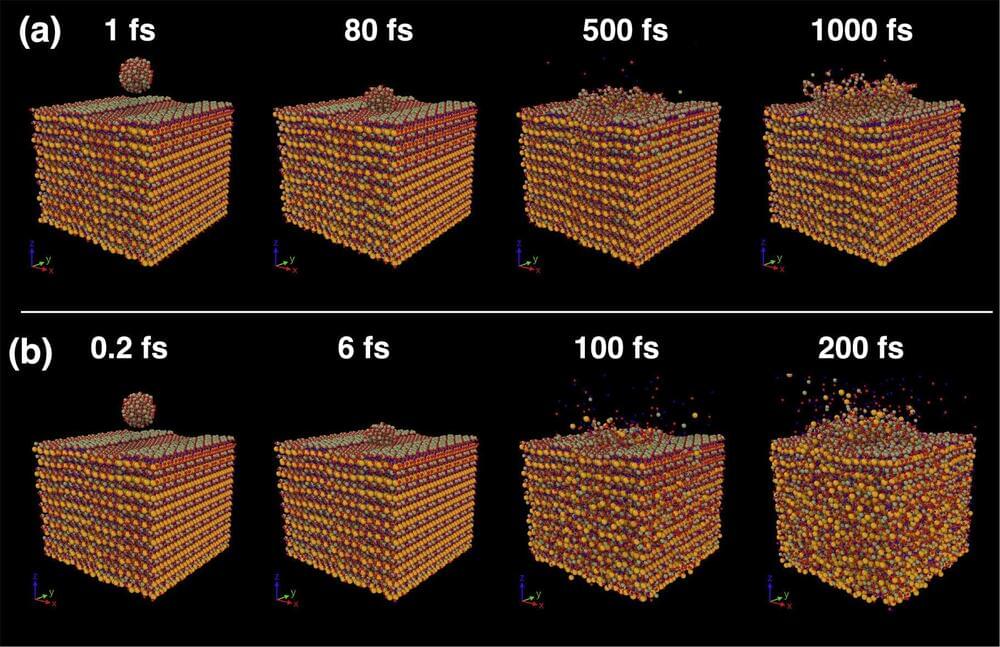
Asteroids are remnants of the formation of our solar system, and while many can be found within the asteroid belt between the orbits of Mars and Jupiter, some cannot. One such object is asteroid (162173) Ryugu, a 1 km-wide near-Earth asteroid believed to have originated in the asteroid belt. However, it has since moved to cross Earth’s orbit, located 300 million km from our planet.
The asteroid is constantly bombarded by debris in space and new research, published in The Astrophysical Journal, has suggested that even microscopic particles can have damaging effects.
Japan’s Aerospace Exploration Agency (JAXA) launched the Hayabusa2 spacecraft to conduct remote sensing and sample collection on the asteroid in 2018 and 2019. Laboratory work on these samples identified a distinct pattern of dehydration of phyllosilicates (sheet-like silicate minerals, such as magnesium-rich serpentine and saponite), whereby the bonds between the included oxygen and hydrogen atoms are broken.
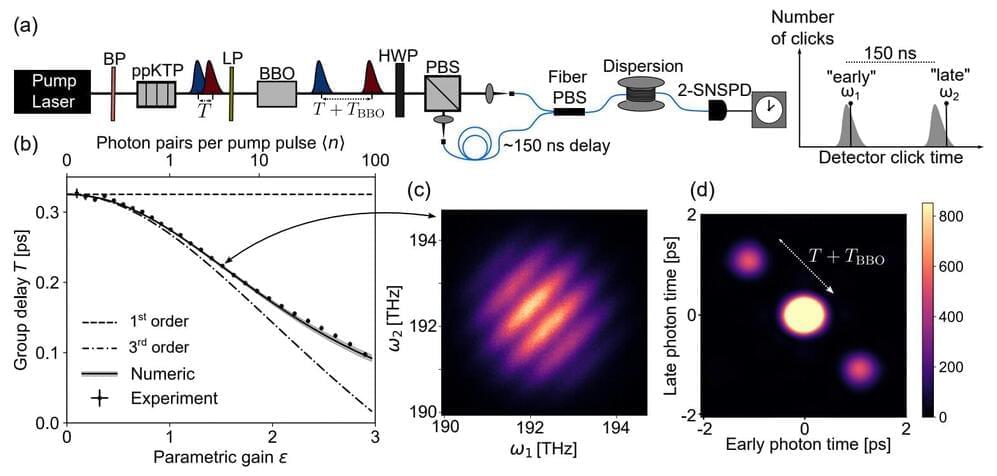
Since it was first demonstrated in the 1960s, spontaneous parametric down-conversion (SPDC) has been at the center of many quantum optics experiments that test the fundamental laws of physics in quantum mechanics, and in applications like quantum simulation, quantum cryptography, and quantum metrology.
SPDC is the spontaneous splitting of a photon into two photons after it passes through a nonlinear object like certain crystals. The process is nonlinear and instantaneous, and the two output photons (called the signal photon and idler photon) satisfy conservation of energy and momentum compared to the input photon (the pump photon). SPDC is often used with a specially designed crystal to create pairs of entangled photons.
A research team from Canada has discovered that there is a delay between the detection of the two output photons, one that depends on the intensity of the incoming light that impacts the crystal. They call this a “gain-induced group delay.”
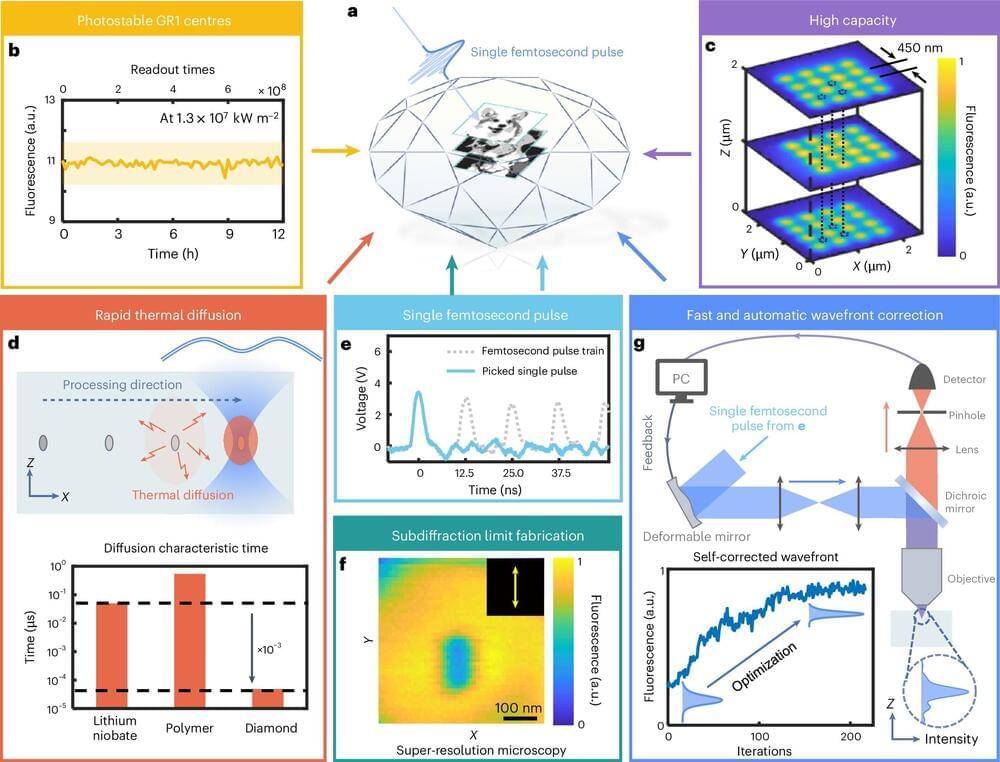
A team of engineers at the University of Science and Technology of China has developed a new way to code data onto a diamond with higher density than prior methods. In their paper published in the journal Nature Photonics, the group notes that such optical discs could hold data safely at room temperature for millions of years.
Prior research has shown that it is possible to code data onto a diamond, allowing for much longer data storage than any other known method. But such efforts have produced low-density storage. In this new effort, the research team developed a new method for etching data onto a diamond that allows for much denser data storage, and thus for storing more information onto a single diamond.
In their work, the researchers used diamond pieces just a few millimeters in length—they were pursuing a proof of concept, not a true storage medium. Future versions, they note, could be the size of a Blu-ray disc. The new method involved the use of a laser to remove single carbon atoms from the surface of the diamond, leaving a tiny cavity. The cavity, the researchers note, exhibits a certain level of brightness when another laser is shone on it.
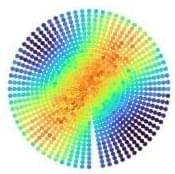
Free-space optical communication links promise better security and increase bandwidths but can suffer from noise in daylight. This is particularly detrimental in quantum communications where current mitigation techniques, such as spectral, temporal, and spatial filtering, are not yet sufficient to make daylight tolerable for satellite quantum key distribution (SatQKD). As all current SatQKD systems are polarization-encoded, polarization filtering has not been investigated. However, by using time-and phase-encoded SatQKD, it is possible to filter in polarization in addition to existing domains. Scattered daylight can be more than 90% polarized in the visible band, yielding a reduction in detected daylight between 3 dB and 13 dB, such that polarization filtering can reduce the brightness of 780 nm daylight to below the unfiltered equivalent at 1,550 nm. Simulations indicate that polarization filtering increases the secure key rate and allows for SatQKD to be performed at dawn and dusk. This could open the way for daylight SatQKD utilizing shorter near-infrared wavelengths and retaining their benefits.
Published by Optica Publishing Group under the terms of the Creative Commons Attribution 4.0 License. Further distribution of this work must maintain attribution to the author(s) and the published article’s title, journal citation, and DOI.
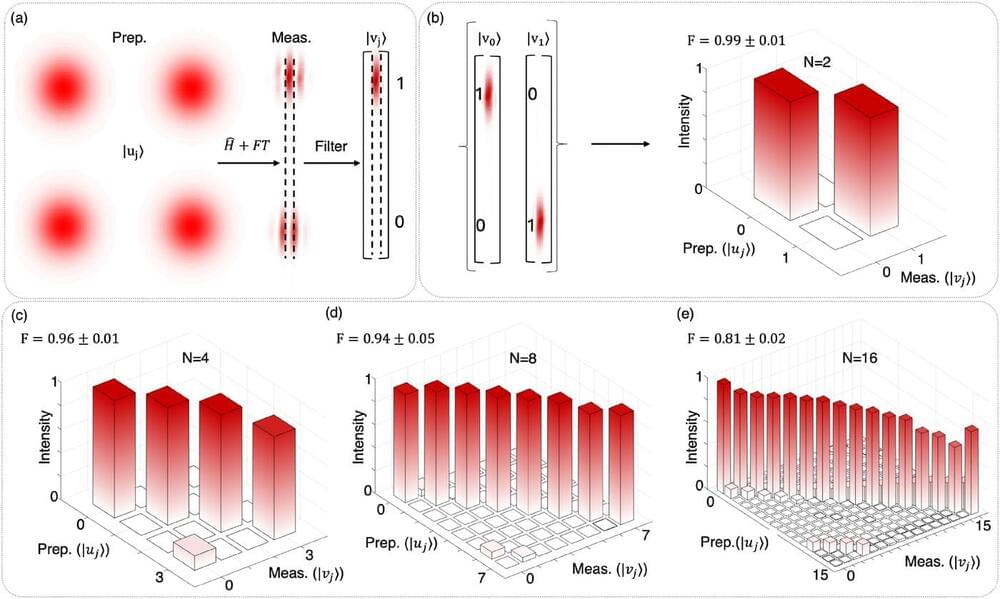
Physicists from the University of the Witwatersrand (Wits) have developed an innovative computing system using laser beams and everyday display technology, marking a significant leap forward in the quest for more powerful quantum computing solutions.
The breakthrough, achieved by researchers at the university’s Structured Light Lab, offers a simpler and more cost-effective approach to advanced quantum computing by harnessing the unique properties of light. This development could potentially speed up complex calculations in fields such as logistics, finance and artificial intelligence. The research was published in the journal APL Photonics as the editor’s pick.
“Traditional computers work like switchboards, processing information as simple yes or no decisions. Our approach uses laser beams to process multiple possibilities simultaneously, dramatically increasing computing power,” says Dr. Isaac Nape, the Optica Emerging Leader Chair in Optics at Wits.

As a simple illustration, let’s say someone wanted to create a tomato sauce recipe, optimizing vitamin C and using sustainable tomatoes within a certain cost range. Journey Foods then taps into its database to generate an optimal recipe, and will continually push recommendations of top suppliers.
“Essentially, when people go to ChatGPT or something, and they’re asking them, ‘write this paper for me, or give me a social media post, speak to this audience,’ or whatever, right? It’s the same thing with our generative recipe recommendations,” Lynn said.
Except Lynn doesn’t use ChatGPT. Systems such as ChaptGPT gather data from the open internet, but Journey Foods gets its data from research institutions, academic journals, suppliers and manufacturers. Lynn said her business uses a lot of private, hard data that’s unstructured, with her company then giving it structure and doing so globally.
China-based Farasis Energy has created a 1,000,000-mile lifespan battery that operates well at various temperatures.